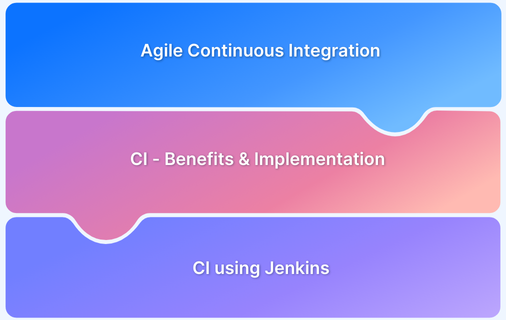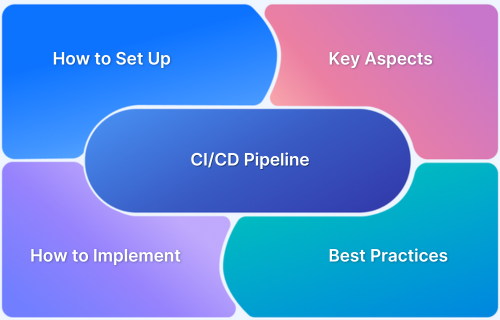Continuous Testing Strategy in DevOps
By Sandra Felice, Community Contributor - November 22, 2024
When a software bug is discovered after a product launch, it can be up to 100 times more costly to fix than addressing it during the development phase. This highlights the critical role of Continuous Testing in modern software development, particularly within the DevOps framework.
Continuous Testing involves integrating testing throughout the entire development lifecycle, helping teams catch defects early and ensure high-quality software delivery. By consistently testing at each stage, it reduces the risk of errors, accelerates development cycles, and significantly lowers the cost of resolving issues after launch.
What is Continuous Testing in DevOps?
Continuous Testing refers to running automated tests every time code changes are made, providing fast feedback as part of the software delivery pipeline. It was introduced to help developers quickly identify, notify, and fix issues. The goal is to test more frequently, starting with individual components and later testing the entire codebase.
Note: Continuous Testing is a key part of the Continuous Integration (CI) process within Agile and DevOps pipelines, enabling faster and more efficient software delivery.
Continuous Testing Strategy in DevOps
In DevOps, where rapid delivery and high-quality software are key, Continuous Testing is essential. It integrates automated testing throughout the development cycle to detect issues early, improve code quality, and speed up release cycles.
Key elements of a Continuous Testing strategy in DevOps include:
- Shift Left Testing: Catch defects early in the process, allowing for quicker fixes and maintaining software reliability.
- Comprehensive Coverage: Implement a combination of unit, integration, and performance tests to ensure all aspects of the software are covered.
- Robust Testing Infrastructure: Build a flexible testing environment with cloud-based setups, containerization, and virtualization. Ensure proper version control and integration between development, testing, and deployment tools.
- Real-World Testing with BrowserStack Automate: Leverage BrowserStack Automate to test on real devices and browsers in the cloud, ensuring accurate, real-world validation of web and mobile apps across different environments.
- CI/CD Pipeline Integration: Automate tests within the CI/CD pipeline to validate code every time it’s committed, ensuring continuous quality checks.
- Continuous Feedback: Provide developers with real-time feedback through detailed reports, enabling quick fixes and continuous improvement.
Why use BrowserStack for Continuous Testing in DevOps?
BrowserStack Automate offers Continuous Testing in DevOps. Some of the major advantages of using BrowserStack Automate with CI tools for test automation include:
- Seamless Integrations: Compatible with popular CI tools like Jenkins, GitLab CI/CD, and Azure DevOps, BrowserStack makes it easy to include real-device testing in CI/CD workflows.
- Real User Environment: Run tests on actual browsers and devices, which improves accuracy over emulators and helps catch environment-specific bugs.
- Parallel Testing: Run multiple tests at once, reducing testing time and accelerating releases.
- Self-Healing Tests: AI-powered self-healing minimizes test flakiness by adapting to minor UI changes, which boosts reliability.
- Scalability: BrowserStack’s cloud-based infrastructure allows teams to scale up or down as needed, providing flexibility and reducing the infrastructure burden on development teams.
These benefits make BrowserStack a valuable addition for teams looking to optimize test automation and enable Continuous Testing in CI/CD pipelines, delivering high-quality software faster. For more on these integrations, visit BrowserStack’s Automate Integrations.
Best Practices for Implementing Continuous Testing Strategy in DevOps
Here are some best practices to make continuous testing more effective:
- Automate Extensively: Automate repetitive tests to detect issues early and save valuable time.
- Integrate with CI/CD: Embed testing into the CI/CD pipeline to receive quick feedback throughout the development process.
- Maintain Realistic Test Environments: Use test environments that closely replicate production for more reliable and accurate results.
- Use Relevant Test Data: Ensure test data is up-to-date and realistic, accurately reflecting real-world user scenarios.
- Shift-Left Testing: Start testing early in the development cycle to identify issues sooner, reducing the need for late-stage fixes.
- Optimize Test Performance: Regularly review and refine test scripts to improve speed and maintain their relevance.
- Mix Testing Levels: Combine unit, integration, and functional tests to cover all aspects of the application.
- Foster Team Collaboration: Promote collaboration between developers and testers to share responsibility for overall quality.
- Use Cloud-Based Tools: Leverage cloud-based testing tools like BrowserStack Automate to run tests across multiple platforms in parallel, enabling faster feedback.
- Analyze Test Results Regularly: Continuously analyze test results to enhance the testing process and address recurring issues.
Conclusion
Continuous Testing is a vital part of DevOps, helping accelerate test results and software delivery. An efficient way to integrate it is by using a flexible environment that allows teams to choose their preferred programming languages, frameworks, and tools.
BrowserStack provides a comprehensive platform for developers and QAs, offering a range of languages, platforms, devices, and automation frameworks for both manual and automated testing. A solid testing strategy, powered by Continuous Testing, ensures faster, reliable software delivery in the CI/CD pipeline.




